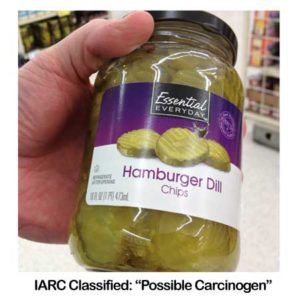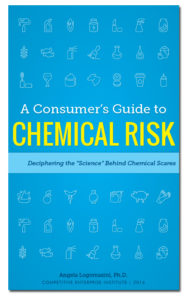Many times, activists will call for bans or hype risks about products that contain trace amounts of chemicals that are “classified carcinogens.” But don’t be fooled. Simply because something is called a classified carcinogen, does not mean it is dangerous to consumer exposed to trace amounts from consumer products.
Government and scientific bodies around the world have developed such classification systems to indicate that at some exposure level and under some circumstance a chemical might increase cancer risk. Such listings do not mean that the chemicals cause cancer to humans exposed to trace amounts found in consumer products. In some cases, these assessments list chemicals as “carcinogens” because they are associated with cancer among workers exposed to very high amounts over decades. These studies are of limited relevance to workers today who employ safety measures, and even less relevant to consumer exposures. A large number of chemicals end up on cancer lists simply because they cause tumors in rodents exposed to massive amounts, which also has little relevance to human exposures.
The Environmental Working Group (EWG), for example, recently applauded McDonald’s for eliminating coffee Styrofoam cups, which are made with the chemical styrene, because EWG notes, “The International Agency for Research on Cancer classifies styrene as a known carcinogen.”(1) Similarly, a group called to California Clean Water Action warns: “The International Agency for Research on Cancer (IARC) has determined that styrene is a known lab-animal carcinogen and a possible human carcinogen, particularly in the occupational setting, with the strongest evidence coming from reinforced plastics workers.”(2)
If you are alarmed about those claims, you should stop eating pickles on your burgers and drinking coffee because both pickles and coffee are also IARC-listed “possible human carcinogens.” In fact, the “possible” category indicates a very low risk. It is akin to saying, “There isn’t much evidence of harm, but we can’t prove otherwise.” In fact, IARC could not find significant risk even among workers exposed to relatively high levels of styrene.
 Most recently, controversy erupted when the U.S. National Toxicology Program (NTP) at the National Institutes of Health reclassified styrene as “reasonably anticipated to be a human carcinogen.”(3) But this conclusion should raise more alarm bells about the politicization of science at the NTP than about styrene.(4) The report notes that data on styrene-related human cancers among workers exposed to high amounts of the substance is “limited”—that is, very weak. That is the same conclusion drawn by IARC. The only other real “hard” data relates to cancers among “some strains of mice,” but not rats, whose stomachs were injected with massive amounts of the chemical.
Most recently, controversy erupted when the U.S. National Toxicology Program (NTP) at the National Institutes of Health reclassified styrene as “reasonably anticipated to be a human carcinogen.”(3) But this conclusion should raise more alarm bells about the politicization of science at the NTP than about styrene.(4) The report notes that data on styrene-related human cancers among workers exposed to high amounts of the substance is “limited”—that is, very weak. That is the same conclusion drawn by IARC. The only other real “hard” data relates to cancers among “some strains of mice,” but not rats, whose stomachs were injected with massive amounts of the chemical.
Humans —even plastics workers —do not experience such high doses or exposure routes in real life, which makes extrapolation from rodents to humans a very tenuous exercise. So be wary when you hear that something should be banned, regulated, or simply feared because it ended up on some government list.
Browse the terms on the sidebar of this webpage for more details and/or download a copy of A Consumer’s Guide to Chemical Risk: Deciphering the “Science” Behind Chemical Scares.
(1) Ashley McCormack, “McDonald’s Makes the Switch from Foam to Paper Hot Cups,” Enviroblog, September 30, 2013.
(2) Clean Water Action, “Health Effects and Regulation of Styrene (CASRN 100-42-5),” undated fact sheet.
(3) National Toxicology Program, Report on Carcinogens, Twelfth Edition (Washington, D.C.: U.S. Department of Health and Human Services, 2011).
(4) Richard Belzer, “The Report on Carcinogen: What Went Wrong and What Can Be Done to Fix It” (Washington D.C.: Competitive Enterprise Institute, 2012).



[…] chemical poses much of any risk on consumer products. Such classifications only sound scary, but as I have noted before, classifications do not mean the chemical poses any risk in current uses and exposure levels. […]